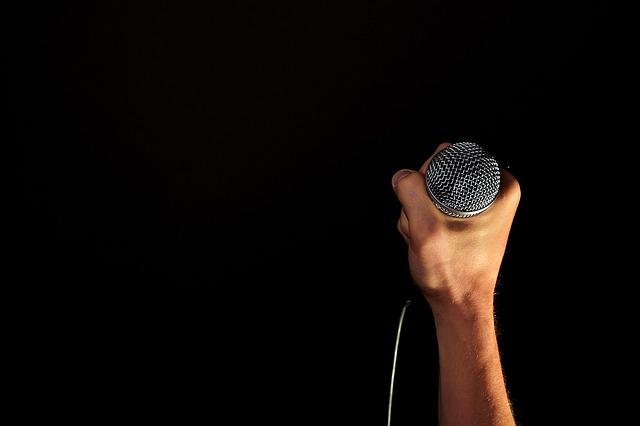Asia does jaw-jaw
Posted By Graeme Dobell on June 3, 2016 @ 12:30

Asia long ago took to heart Churchill’s admonition that it’s better to jaw-jaw [1] than war-war.
A lot of talking goes on around here. And the jaw-jaw intensity has risen as Asia confronts a long slope that descends in the direction of war-war.
The big strategic trend story of recent years is the fear that the system isn’t strong enough to handle mounting pressures [2], that the prospects for an Asian order are fading not growing [3].
As Ron Huisken argues in CSCAP’s 2016 Regional Security Outlook [4], Asia’s security order is eroding as military posturing and partnering intensifies:
‘The states of the region are still spending a lot of time in dialogue but along critical channels the degree of engagement, communication and understanding appears to have encountered sharply diminishing returns.’
The need is for smarter and better jaw-jaw. Yet in stating that aim, it’s worth looking back at what jaw-jaw has achieved for Asia. The talking has delivered much, if not enough.
I am writing this in Kuala Lumpur at the 30th annual Asia-Pacific Roundtable [5], where Southeast Asia’s strategic institutes do a distinctly ASEAN version of jaw-jaw.
Then it’s off to Singapore for the 15th annual Asia Security Summit [6], the Shangri-La Dialogue—a Brit think tank partners with Singapore to talk war and peace in a hotel named after Shangri-La [7], a mythical, permanently happy land imagined in ‘Lost Horizon.’
These are different jaw-jaw festivals that are deliberately twinned by calendar and geography; they chew through a lot of common territory.
The Roundtable is a classic Track Two strategic dialogue, while all those Defence Ministers at Shangri-La plough the hybrid called One-and-a-half Track.
Come look at what 30 years of Roundtable jaw-jaw [8] has done. Malaysia’s Institute of Strategic and International Studies proudly proclaims it ‘the premier Track Two forum in the region’; a fair call.
This lightning trip through the Roundtable decades will alight on a key personality, the ASEAN essence, an economic idea, the experience of the pariahs, and the ever-pressing need to build the architecture.
Looking back at Roundtable history means seeing the figure of its originating dynamo, the late and much missed Noordin Sopiee.
It’s still a gap in the KL experience not to see Noordin looming up with that quiet grin, ready to explode on you the latest idea he’s been dissecting.
Noordin was the classic jaw-jaw black-belt—a passionate Malaysian equally committed to ASEAN, a nationalist who could be, at the same moment, both regionalist and internationalist. Noordin was ever nimble but his aim was constant.
The essence of the Roundtable is that it’s ASEAN’s take on what Asia means. You know the language. Everyone is invited for the journey, but ASEAN drives and ASEAN centrality is, well, central. This is Second Track done with ASEAN sauce: ‘to brainstorm and share ideas…to network and develop trust and confidence…building relations with each other.’
An Australian master, Ross Garnaut, thinks the Roundtable’s great contribution to economic thinking was to push and grow the concept of Open Regionalism. Asia could cut trade barriers without discrimination against outsiders—the original faith expressed in the creation of APEC, Asia Pacific Economic Cooperation.
Garnaut wrote [9] that Open Regionalism reigned as the guiding idea of regional integration from the 1980s till the Asian Financial Crisis in 1997–98:
‘This was the most productive period ever in trade liberalisation, expansion and economic growth within Southeast Asia. We learned how valuable Open Regionalism had been when the Asian Financial Crisis knocked international cooperation off course, leading to a 21st Century era of preferential trade and eventually slower expansion of trade and economic activity.’
The Roundtable invites everyone—no pariahs or polecats in the big jaw-jaw tent. Looking back over the three decades, Bunn Nagara [9] wrote:
‘In some years the Myanmar representation would serve up a classic lesson in polished diplomacy. Despite the atrocities committed by its then military junta, the country’s participant could weave arguments in perfect Queen’s English as to why the junta was the best and only hope for the country. Even stiffer presentations came from the North Koreans. They were scripted, vetted and pre-arranged affairs without taking up time by entertaining any questions or comments.’
Paul Evans recalls moderating a session where ‘the North Korean participants refused to conclude a presentation, which required us to turn off the sound system and flash the overhead lights.’
The final thought comes from another jaw-jaw grandmaster, Indonesia’s Jusuf Wanandi. He makes the key point that throbs through the decades—the ‘critically important’ need to build and strengthen the regional security architecture. The architecture language is as familiar as the aching need it describes.
Wanandi says China and the US cannot provide the answer: ‘The strategies of the two major powers are not inclusive of the other, and risk becoming confrontational.’
Step forward ASEAN, that association that always aims for the non-confrontational, inclusive middle way. The hope of the side is the East Asia Summit, which brings China and the US together in regional, ASEAN-driven architecture (ah, Asia’s architecture quest!).
With the hope comes the usual jaw-jaw caution as Wanandi observes: ‘Nonetheless, for the EAS to function properly, it needs a more capable and willing ASEAN as the organiser. It is not yet the case.’
That not-yet-the-case judgement is the classic jaw-jaw stance. More to do. More argument needed. Differences confronted. If consensus is out of reach, at least achieve an understanding of the conflicting views. Make that architecture stronger and strive to get it working. More jaw-jaw for sure-sure.
Article printed from The Strategist: https://aspistrategist.ru
URL to article: /asia-jaw-jaw/
URLs in this post:
[1] jaw-jaw: http://www.bartleby.com/73/1914.html
[2] mounting pressures: https://aspistrategist.ru/asias-trend-and-temperature/
[3] fading not growing: https://aspistrategist.ru/chinas-peaceful-rise-into-pieces/
[4] 2016 Regional Security Outlook: http://www.cscap.org/uploads/docs/CRSO/CSCAPCRSO2016.pdf
[5] Asia-Pacific Roundtable: http://www.isis.org.my/
[6] Asia Security Summit: https://www.iiss.org/en/events/events/archive/2016-a3c2/june-4a2d/sld2016-70d7
[7] Shangri-La: https://en.wikipedia.org/wiki/Shangri-La
[8] 30 years of Roundtable jaw-jaw: http://www.isis.org.my/index.php/research-a-publications/publications/books/2204-isis-focus-22016-no2
[9] wrote: http://www.isis.org.my/images/files/2016/isisfocus/isis_focus_issue-2_apr30-2016.pdf
Click here to print.